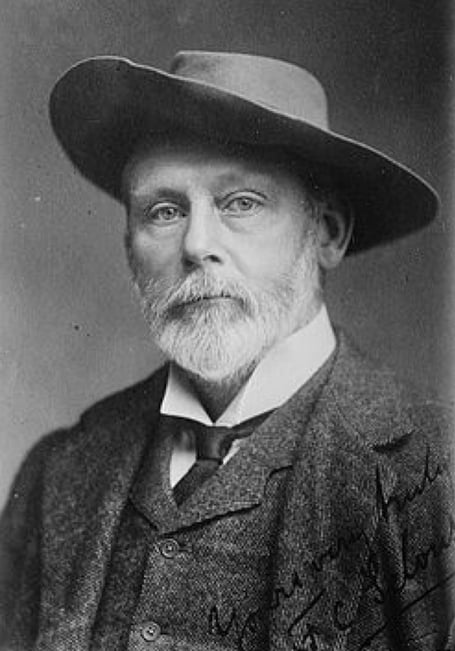


BIG game hunter Frederick Courteney Selous (1851-1917) lived at Fox Corner, Worplesdon. He once welcomed his friend the former US president Theodore Roosevelt when he came to visit.
Much is known about the two men. Selous (which is pronounced “sir loo”) was dubbed “a gentleman officer and epic wild man”. In fact, this hunter-naturalist was one of the first conservationists.
Despite slaying wildlife for sport, it is said he loved animals, insects and birds. However, in time he became aware that the sport enjoyed by European hunters was leading to a significant reduction in the amount of game available in Africa.
Selous collected specimens of all kinds for museums and private collections.
In 1894, aged 42, he married 20-year-old Marie Catherine Gladys Maddy. They settled in a house called Heatherside on the edge of Worplesdon (technically in the parish of Pirbright today).
He had built a special gallery to house his trophies from his shooting expeditions.
He would have been a well-known character in Worplesdon. His great love was cricket and he played for the Worplesdon side until 1915.
Theodore Roosevelt (1858-1919) served as the 26th president of the United States from 1901 to 1909. He too was an accomplished naturalist. However, he also shot big game and other wildlife in Africa.
In March 1909, the then former president took part in the Smithsonian-Roosevelt African Expedition, a safari in east and central Africa. It is said the team killed or trapped 11,400 animals, from insects and moles to hippopotamuses and elephants. The carcasses were shipped to Washington to be mounted.
Recently, I received an email from a Chris Bebbington. He wrote that he is researching a visit Roosevelt made to Selous in 1910 and did I have any information. Although I didn’t, I did have a hunch the visit may have been reported in the local press at the time. A quick search by my friend Mark Coxhead on the microfilm at the Surrey History Centre came up trumps!
A report in the Woking News & Mail of 3 June 1910, included: “Mr Theodore Roosevelt, the ex-President of the United States and his son, Kermit, paid a private visit to Mr. F. C. Selous, the famous hunter, at Heatherside, Worplesdon, on Wednesday, and stayed the night.
“Accompanied by their host, the visitors reached Woking at half-past five, and their arrival was witnessed by a small crowd, who immediately recognised Mr Roosevelt.
“In the evening the ex-President visited Mr Selous’ museum, probably the finest collection of its kind in the world, and on Thursday morning made a further inspection of the trophies which it contains.”
Another report of the meeting, published in the Evening Standard, included: “At dinner in the evening Mr Roosevelt met a number of the hunter’s friends, including Lady Brocklehurst and other local residents,” adding: “Today Mr Roosevelt will motor to Sutton Place for luncheon with Lord Northcliffe.”
When the First World War broke out, Selous appears to have been spending time as a special constable in Pirbright! He was keen to do his bit for king and country, but to begin with could not get himself enlisted – probably something to do with his age, as he was by that time over 60 years old.
Finally, in 1915, he joined the British Army as a captain in the rather uniquely composed 25th (Frontiersmen) Battalion, Royal Fusiliers. His theatre of war was East Africa, and on September 26, 1916, he was awarded the Distinguished Service Order (DSO).
However, he did not live to see the war’s end. This great marksman was shot in the head by a German sniper on January 4, 1917, on the banks of the Rufiji River, and died instantly.
He is buried near to where he fell in today’s Selous Game Reserve, Tanzania. His grave is marked by a simple flat stone with a brass plaque.





Comments
This article has no comments yet. Be the first to leave a comment.